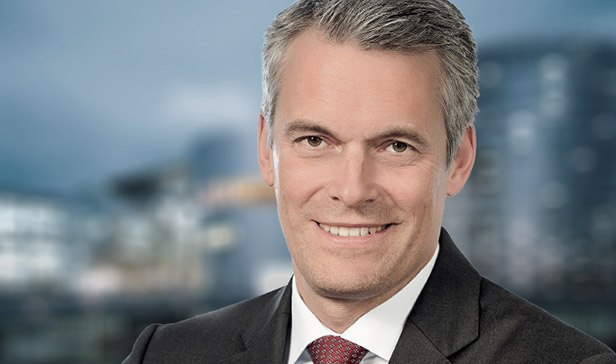With a cloud-based infrastructure, Apleona CIO Bernhard Götze lays the foundations for new digital customer services in facility management.
"We have positioned ourselves as a strategic partner for our clients through digital services," says Bernhard Götze, CIO Apleona, since September 2017. With around 20,000 employees and sales of more than two billion euros, the company specializing in facility management is one of the largest real estate service providers in Europe.
According to the IT Leader, the necessary freedom for the digital initiatives was created primarily by outsourcing the IT infrastructure. This has reduced operating costs by around 20 percent and improved service quality. Together with the service provider IBM, Apleona relies on a hybrid multi-cloud approach.
For Götze, professional handling of data is crucial to success in the digital change: "The existing company data and its intelligent use are the basis of every development in real estate management and thus the key to new offers. This requires cloud resources and edge computing as well as data analytics, artificial intelligence and the Internet of Things (IoT). In facility management, modern sensor technology combined with high-performance cloud environments are key. Only then will it be possible to capture, process and securely transmit data streams. "In this way, real estate companies can create smart environments that adapt to the needs of building users and make their everyday work easier,” says Götze All about Analytics at CIO.de.
Digital services in buildings
Michael Lange, Chief Digital Officer of Apleona, explains how this can look like in practice. According to the manager, the starting point for digitisation was the transformation of the "client experience". As an example, he cites the Apleona Workplaces App, which includes an intelligent and sensor-based room booking solution. For operators, users and owners, this would result in a wide range of optimization potentials; for example in the control of cleaning staff or in the development of new space and room concepts.
Also the new "Quick Ticketing" brings advantages. Users can use an app to create a ticket when they notice a problem in the office, such as dirt or faulty equipment. The responsible facility manager can track the processing of the ticket via a central portal. So-called "Energy Pods" can also be booked. These are comfortable mini cabins in the building where employees can relax, optionally with music accompaniment.
Apleona Ecosystem
The technical basis for such services is the Apleona Ecosystem. Götze describes it as a modular, cloud-based platform with an underlying development and operational organisation. This enables IT to develop scalable and standardised services. This allowed Apleona to react quickly to changing customer requirements.
The IT organisation of Apleona is responsible for the technical implementation of the digital initiatives. It provides services for more than 20,000 employees, spread across around 1,000 locations and 30 countries. The IT department supports several hundred applications, some of which are individually developed. The "business-critical core", according to Götze, consists of ERP applications from Microsoft and SAP, as well as a document management solution from ELO.
The IT organization in its current form was created in 2017 after the spin-off from the Bilfinger Group and the takeover of Apleona by the investor EQT. The IT department was thus faced with the challenge of transferring a large number of applications to a new environment in a short period of time. For the migration of the applications as well as the provision and operation of the underlying infrastructure, Apleona cooperated with IBM as a strategic partner. Götze: "The basis is a private cloud environment that is aligned with the IT security and data protection requirements of Apleona and its customers and is audited accordingly".
Hybrid Multi Cloud
After the successful start, the IT organization worked permanently on the topics of service costs and service quality. The first measures included the consolidation of externally procured IT services, which were originally provided by different service providers. For Götze, the decisive factor was the creation of a hybrid multi-cloud environment that combines private and public cloud systems under a single management: "The merging of IBM Cloud and Microsoft Azure is a logical step to seamlessly integrate the various services of the cloud providers into the overall architecture during provisioning.
When it comes to mission-critical applications, Apleona also relies on its preconfigured and fail-safe private cloud environment. For this purpose, there is a dedicated infrastructure that is operated in the IBM cloud. The CIO takes a different approach for existing and new digital solutions. As cloud-native applications, these posed completely different requirements for development and operation. The state of Hesse not only uses public cloud environments from IBM, but also Microsoft Azure. Götze: "Technically and contractually, this gives us a high degree of flexibility.
The CIO especially praises the "cooperation at eye level" with the strategic partner IBM. The aspects of reliability and transparency were particularly important, he said. This included regular benchmarking of prices and conditions. In the projects, the teams were guided by the basic ideas of agile cooperation and clarified all technical and contractual aspects within three months. CDO Lange is also satisfied with the progress made so far: "The digitization partnership is generating innovations that enable us to increase our efficiency and set ourselves apart in the market.
The original article of the CIO magazine can be found here.


